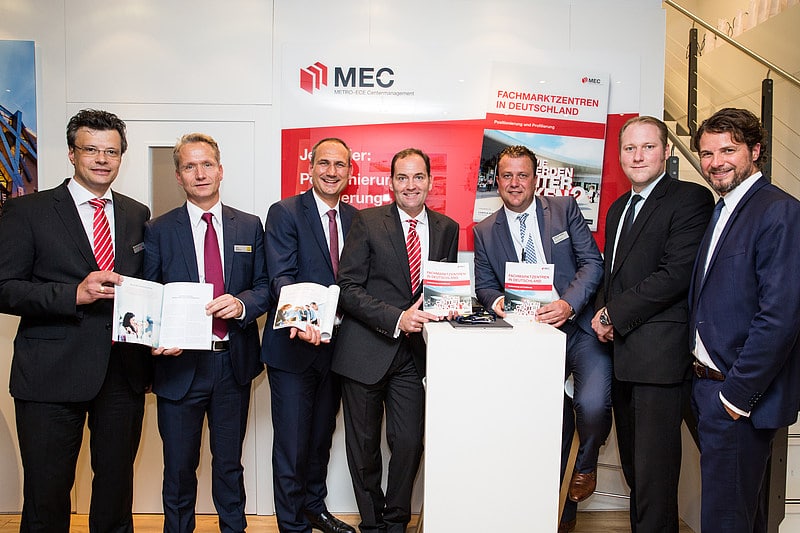- 4. October 2016
4th Retail Parks Report presented - Branding makes retail parks a safer investment
An analysis by GfK of over 250 retail parks in Germany proves that retail parks which are developed as brands reduce the risk for investors. What is now the fourth edition of the market report “Fachmarktzentren in Deutschland” (‘Retail Parks in Germany’) is therefore dedicated this year to the topic of “Positioning and image: How does a center become a brand?”. Today MEC METRO-ECE Centermanagement, together with its trusted partners Corpus Sireo, Dr Lademann & Partner, GfK, Savills and TH Real Estate, presented the 120-page publication to the public at Expo Real in Munich.
“Branded centers fundamentally perform more strongly than those that are not brands,” says GfK retail expert Manual Jahn, and continues, “No-name centers are extremely dependent on hypermarkets as anchor tenants, because they have a lower proportion of non-food tenants. Branded centers are more diversified, and despite the significantly higher proportion of comparatively low-turnover non-food vendors, they average 3% higher performance in sales per square metre.” The COO of MEC, Christian Schröder, adds, “So branding increases the turnover of the retailers, and through diversification it reduces the risk for investors.”
Positioning, image and branding
In the context of yield compression for new acquisitions and increasing competition between trade and retail locations, the new market report is therefore dedicated to the high significance of positioning, image and branding for retail parks and hybrid malls. Schröder formulates the key questions of the market report as follows, “How does a center become a brand? What are all the elements covered by 360° brand management? What is the right positioning for a retail park, and how can investors economically exploit long-term customer relationships with consumers and tenants?”
Transaction volume of retail parks higher than ever before
A new record: retail parks in Germany achieved a transaction volume of over 2 billion euros last year. Retail parks that have been developed as brands are particularly popular, with stable cash flows in the long term and high quality in terms of properties and locations. “Such properties occasionally sell at a factor of 20,” says Head of Retail Investment Germany at Savills, Jörg Krechky. “It can be assumed that the majority of the investors will continue to rate safety higher than returns,” he emphasises.
Institutional investors such as insurance companies and pension funds in particular are looking for secure, long-term, predictable dividend yields, ideally exceeding their own cash flow targets. This is also confirmed by Marcus Mack, from his experience as a fund manager at TH Real Estate, saying, “Nowadays institutional investors require dividends of at least 4%. With investments in retail parks, even in today’s market they can still generate between 5.5 and 6.5% with a financing ratio of around 50%.”
In order to avoid bad investments, the acquisition processes are increasingly conducted in a professional and structured manner. “After purchasing a property, the key to success lies in creating a strong brand and maintaining it in the long term. This gives the centers the dominance they require, and allows them to successfully assert themselves against market changes,” says Managing Director and Fund Manager at Corpus Sireo International, Hans Stuckart.
Repositioning to meet customer requirements
The professionalisation of the retail park sector has also resulted in image building and clear positioning of the individual properties within the respective catchment areas. Image building and positioning have become adapted to the consumers and the respective local competition. What consumers value about retail parks is their price orientation, but they also want a more pleasant quality of the time spent there, along with a greater variety of the product offered and more services. “In contrast to many other retail formats that have not yet managed to escape the maelstrom of mediocrity, retail parks remain on the track to success with their clear positioning: price-oriented and focussed on routine shopping,” says Head of Financial Services and Fashion&Lifestyle at GfK, Manuel Jahn.
Planning regulations as a determining factor
The modification of existing properties to meet market developments and customer wishes is fundamentally determined by the provisions and application of the building and planning law. For greenfield sites and expansions, compatibility assessments are generally required, and these must be capable of withstanding legal challenge. “The current case-law from the courts applies new, stricter requirements to legally watertight compatibility assessments,” explains Uwe Seidel, Managing Director at Dr. Lademann & Partner. One of the key requirements here is the application of a so-called ‘dynamic impact prognosis’ to assess the potential consequences of developments and refurbishments. In addition to this, further test criteria have recently been clarified, the application of which will be mandatory in future. “In future, the quality of the assessment work will therefore have an even greater influence on the success and speed of the respective development planning procedure,” notes Seidel.
Guest articles from industry insiders
Two guest articles from industry experts round off this year’s Retail Parks Report. In one of these, the design agency kplus konzept describes the customer journey through a retail park, and in the other Wisag Facility Services presents the results of a study that investigated the extent to which retail park personnel are confronted with customer inquiries.

